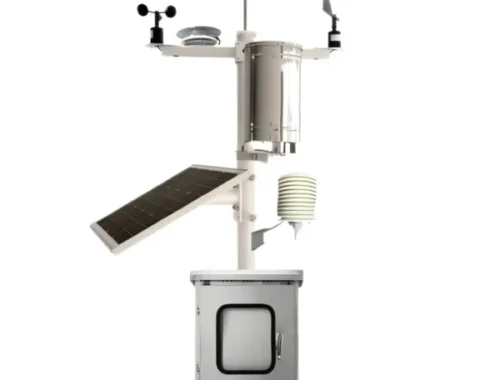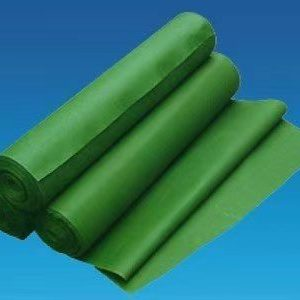The Evolution of How Mountaineers Fuel
A close look at the food and tech that has allowed humankind to climb higher, faster
A lot has changed since Sir Edmund Hillary and Tenzing Norgay executed the first successful climb to the top of Everest in 1953. Some of the biggest changes have occurred in mountaineers’ understanding of proper nutrition and the products available to help fuel their journey to the top. We scoured historical records and firsthand accounts from as far back as late 1800s to trace the most important advancements that have helped to make previously unreachable summits just a little more accessible.
1892: The Primus Stove
Near the end of the 19th century, Swedish inventor Frans W. Lindqvist created the world’s first sootless, compressed air–powered kerosene stove. He dubbed it the Primus, and it forever altered the diets of mountaineers and explorers.
Prior to the Primus, portable kerosene stoves emitted heaps of ash and smoke as they burned—not ideal seasonings for a base camp meal—because they combined fuel straight from the tank with flame. But the Primus vaporized the kerosene before ignition, eliminating the soot and smoke and allowing for a much cleaner, much faster form of cooking.
The new stove was an instant hit and was used on expeditions to places like the North Pole and Everest. The Primus made achieving a quick, hot meal a manageable task, expedited the process of boiling water to use for cleaning and drinking, and cut hours from the daily task list of mountaineers, so they could cover more ground in less time.
1953: Vitamin Tablets
When Hillary and Norgay climbed Everest in 1953, they brought along British mountaineer and physiologist Lewis Griffith Cresswell Evans Pugh, who was there to counsel the expedition on nutrition and create a scientifically backed fueling regimen to meet the demands of alpine exploration. A large part of Pugh’s nutrition plan involved a coordinated vitamin supplementation plan specific to the body’s needs at high altitude.
“A further question that needs to be raised is that of vitamin requirements,” Pugh wrote. “[Vitamins] might be inadequate in a party subsisting for three months on packed rations.” Pugh determined that if you eat more or less the same thing for three months—the approach to expedition fueling at the time—you’re bound to have some nutritional deficiencies. That, in conjunction with the toll that vigorous exertion in high-altitude conditions takes on your body, meant that mountaineers were putting themselves at serious risk. In response, Pugh issued his fellow mountaineers daily vitamins. The tablets contained vitamins A, B, C, and D, as well as thiamine, riboflavin, nicotinamide, and folic acid—all crucial for proper physiological functioning.
The need for climbers to pack multivitamins quickly became an imperative, not a recommendation. Pugh’s vitamin discovery helped generations of future climbers stay strong and sharp despite eating the same foods repeatedly throughout months-long trips. While today that means more fortified foods and fewer supplements, the vast majority of mountaineer’s favorite vitamins or vitamin-fortified products are derived from Pugh’s formula.
1965: Powdered Sports Drinks
Not long after physiologists like Pugh began making mountaineers aware of potential vitamin and nutritional gaps, sports drinks like Gatorade and Gookinaid (now Vitalyte) quickly followed suit. Although initially developed for other sports—football, in the case of Gatorade—these drink mixes developed a mixture of water, sodium, and electrolytes like potassium to hydrate more effectively. At high altitudes especially, the body has to use more energy than it would at sea level to power the same movements. As a result, dehydration and fatigue come on more quickly and intensely. These drinks pair sugar with electrolytes to replenish glycogen stores, counter vitamin loss, and delay the onset of extreme exhaustion.
Like the Primus stove, powdered sports drinks didn’t introduce something totally new to the equation—existing forms of supplementation like sugar cubes and vitamin tabs would have worked—they just made it easier. The powder was supremely packable and added relatively little weight compared to how many servings it delivered, and it could be consumed on the go, reducing the number of required stops on any given day.
1969: Freeze-Dried Food
Freeze-drying was originally invented before 1969 for military rations during the Vietnam War effort. Rumor has it they tasted like a “slight chemical sting.” That changed when Oregon Freeze Dry saw the consumer potential for freeze-dried meals that actually tasted good and launched the Tea Kettle line of outdoor enthusiast–inspired rations.
These meals were designed to be highly portable—perfect for mountaineers who valued packing large amounts of lightweight calories. It also meant that you could actually eat meals that felt gourmet as opposed to the cardboard-like options mountaineers had grown used to on their trips in the name of carrying as little as possible. Add 16 ounces of hot water, wait ten minutes, and you had beef stroganoff in the middle of nowhere.
Freeze-dried meals quickly became all the rage. They freed up space in the pack for other important items (as well as for gear and technology that would be developed later), allowed you to eat a well-rounded meal at day’s end without carrying all the heavy ingredients separately to avoid more nutritional pitfalls, and facilitated lighter and faster trips.
1986: The Energy Bar
Mountaineers were no strangers to getting their fuel from a wrapper. References to consuming chocolate bars date back more than a century as an easy way to get fast-acting energy in the form of quickly digested sugars. But anything portable and just slightly more nutritious—like the Pillsbury Company’s Space Food Sticks in the 1970s—was said to taste overly manufactured and fake.
Faced with the same conundrum of how to refuel during competition or long training runs without having to stop, marathon runner Brian Maxwell and his girlfriend launched PowerBar in 1986—a single bar made of a combination of oat bran, milk protein, and sugar, fortified with vitamins, amino acids, and minerals.
It was almost immediately appropriated by the mountaineer crowd. The oat bran burned slower than straight sugar from something like a chocolate bar and provided lasting energy over a longer day. The fortification process added vital nutrients that plain old sugar lacked, and the taste was good enough to actually enjoy putting it down.
Or so thought everyone except Gary Erickson. In 1990, the cyclist decided the current energy bar offerings tasted like crap, so he raided his mom’s kitchen and developed a bar of his own: the Clif Bar, with comparable nutritionals but flavors that resemble dessert and a texture more reminiscent of real food. Today, you’re far more likely to encounter a Clif option (especially the nut butter–filled varieties) than you are a PowerBar.
2017 and Beyond
Today, there are lighter and more powerful stoves (like the now commonplace Jetboil) and some that even allow mountaineers to create electricity (like the BioLite CampStove). But the real modern-day innovation has come in portable foods, which have also gone high tech. Newer bars look to provide key macronutrients and an energy boost from new and unlikely sources. And many companies now consider sustainability in both production and packaging. Take the Chapul Cricket Bar: The company claims that cricket protein delivers 71 grams of protein per 100 gallons of water, as compared to 6 grams of beef protein per 100 gallons. The ProBar Base Coffee Crunch exemplifies the all-in-one mentality of mountaineering nutrition: A single bar has 20 grams of plant protein and 55 milligrams of caffeine, so you only need one to jump-start the system before a day’s trek.
What’s next? It’s anyone’s guess, but if Meat Chips are any indicator, the lines between food groups and nutrient sources should continue to blur. At 21 grams of chicken protein per 2.6-ounce bag, the snacking revelation proves that the arms race for the best on-mountain grub is only getting more fierce.
You May Also Like

Automatic Weather Station: A Comprehensive Overview
March 14, 2025
Sprunki: A Comprehensive Exploration of Its Origins and Impact
March 19, 2025